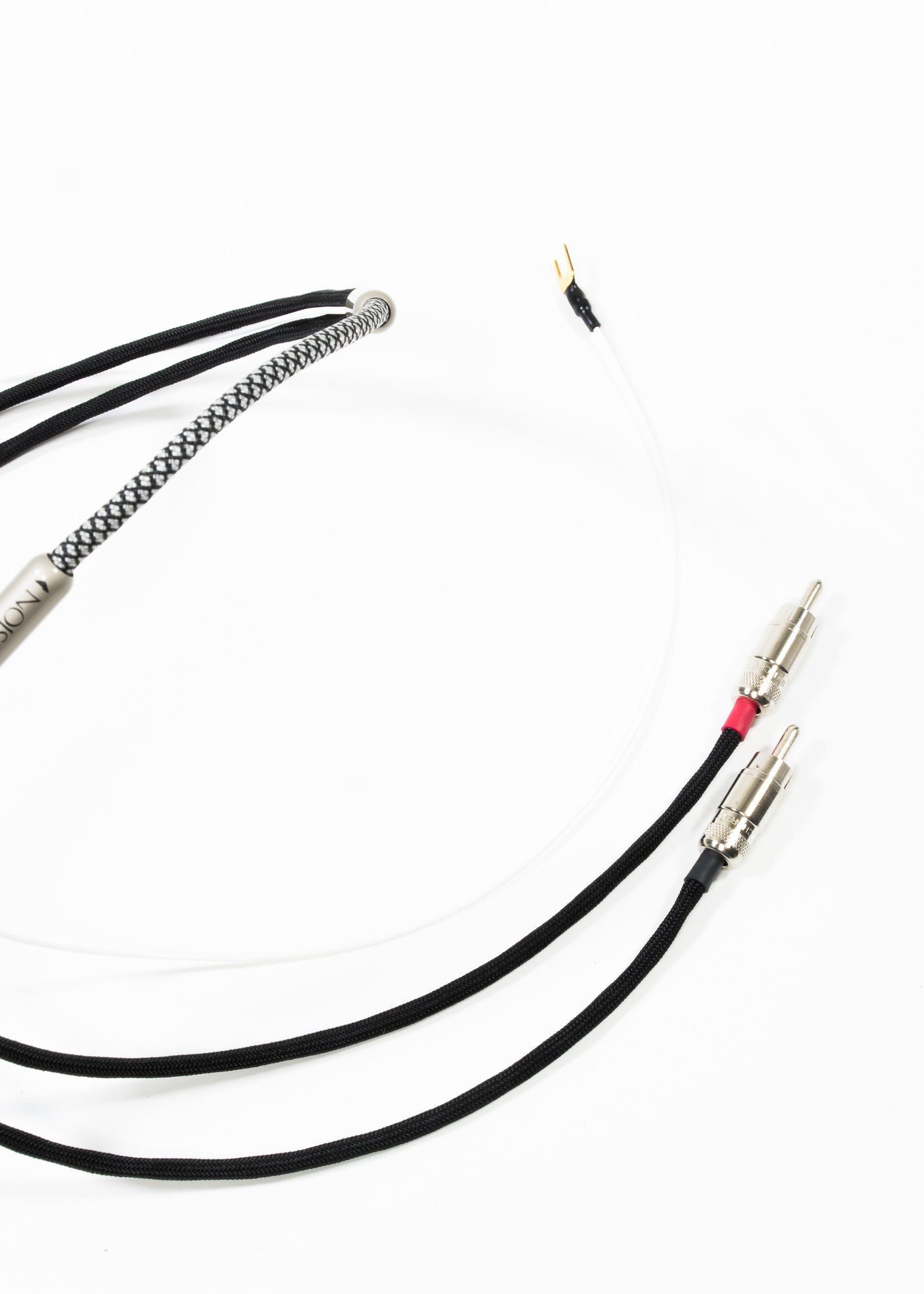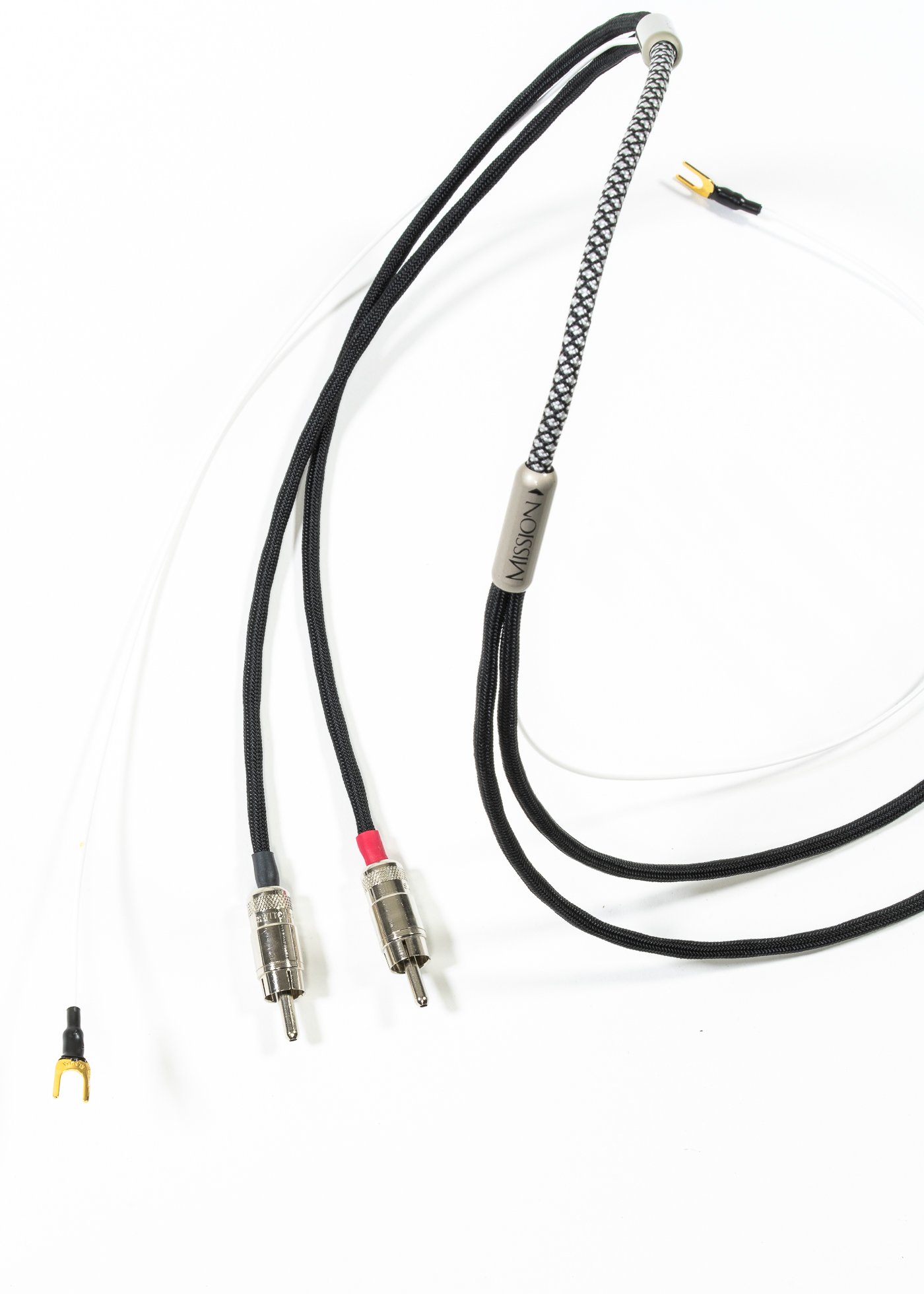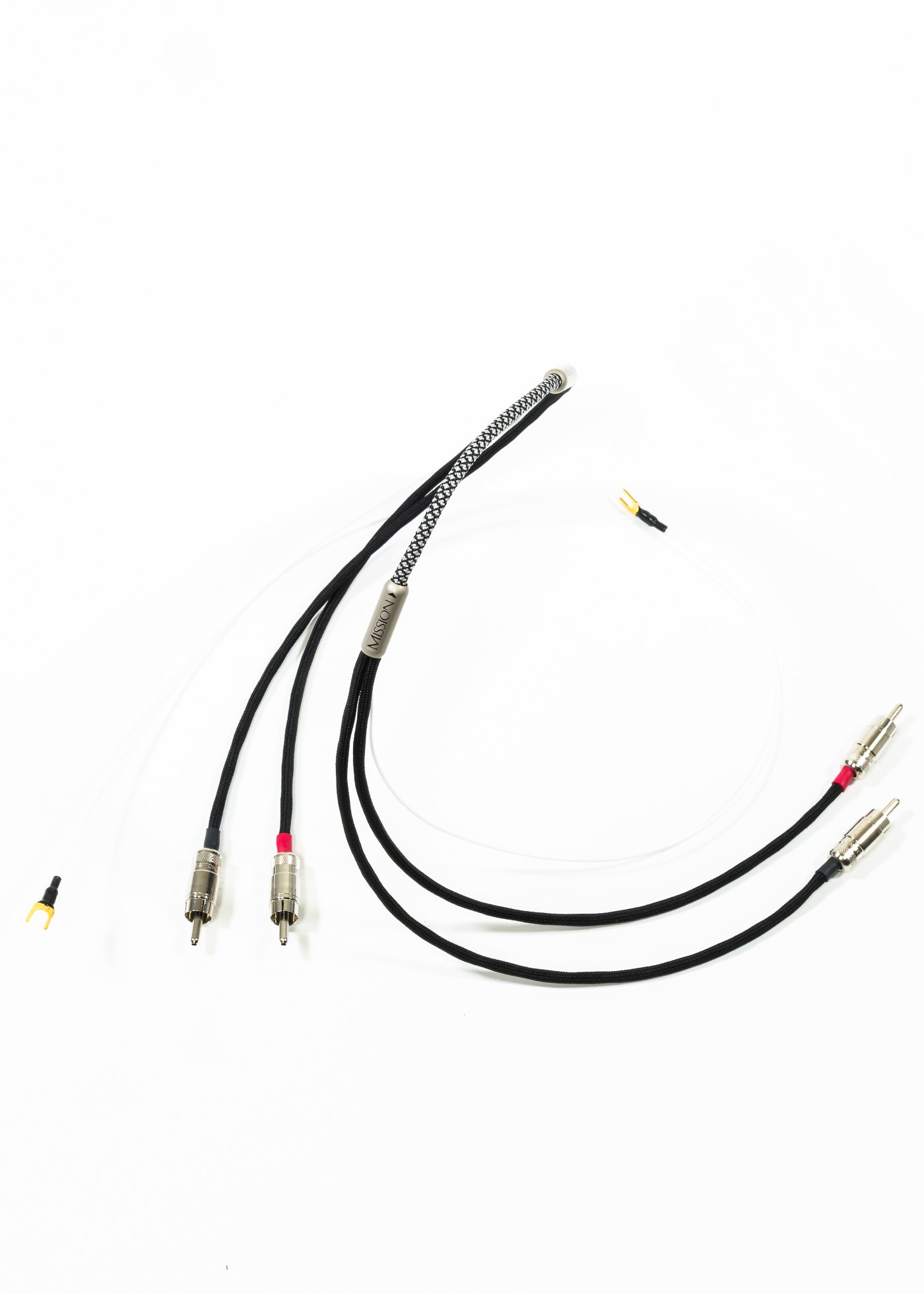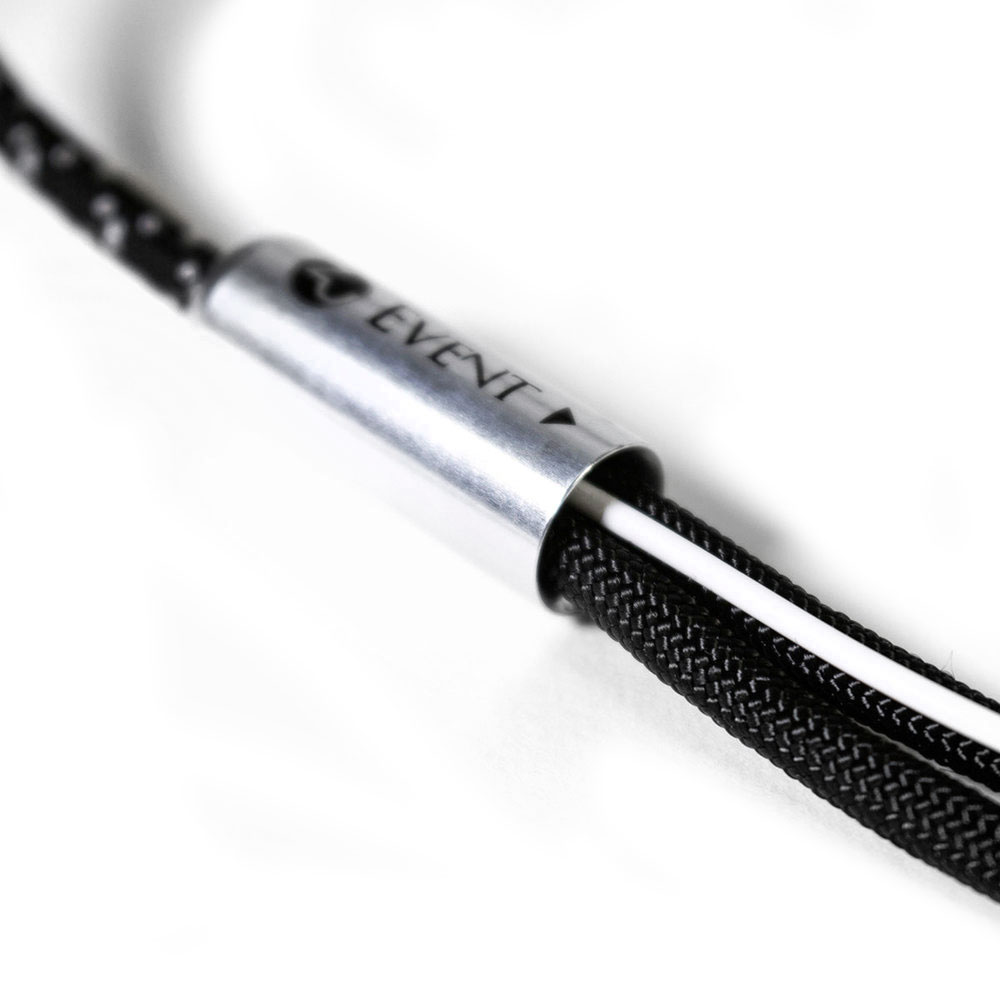Mission-Phono Mk.II is developed specifically for phono-level two-channel stereo signal transmission and gives you the best possible protection from RF noise, the widest bandwidth, and the most convincing transmission of stereophonic content—left and right channels being perfectly matched and propagate in the same exact dielectric space. Ground is not tied or referenced to either end of signal or signal’s mate.
Tonearm / turntable phono-level signals are much smaller and different from standard RCA-type line-level signal. Line-level RCA-type signal is transmitted and received within a high-impedance single-ended system and needs to support up to five volts. Phono-level signals operated in the millivolts, may have as low as a 2 ohm source impedance, and experience as high as 75dB of gain at the phono preamp. Mission-Phono is designed for this application and addressed the unique features of phono-level signal. The result is a state-of the-art performing cable but within the Mission line’s high value proposition. Combining a low reactance Zu/Gore® two-channel stereo geometry with an overall high conductance and high magnitude shield ensures pristine interconnection and transmission for your very low level phono signals.
Shared dielectric space of both left and right channel; left channel signal sees the exact same electrodynamics and environment as the right. This has two major benefits. The technology safeguards against induced noise; and second it ensures the best possible stereophonic performance—measured and heard.
Zu Mission-Phono Mk.II also use innovative material technologies such as Teflon® (PTFE) dielectric and pure silver deposit over pure copper core. 5-pin connectors are made by Cardas and are solder terminated using lead-free 4% silver-bearing solder and are then epoxy potted. RCA connectors are crimped and epoxy potted. XLR-type connectors feature silver plated contacts and these are terminated using 4% silver-bearing lead-free solder. These are a few of the features that ensure your cables will perform decade after decade without worry or trouble.
ABOUT THE WBT NEXTGEN PHONO PLUG
We believe the WBT® Nextgen™ plugs to be the best out. Signal and ground contacts are made from pure copper and not turned from brass. The pure copper, single piece contacts are then directly gold plated to ensure a lifetime of consistent maintenance free performance. This single piece pure material methodology yields higher conductance measures and lower noise, improving detail without any spectral imbalances or treble forwardness. Also, the bulk of the dielectric material used in supporting the contacts is Teflon for the lowest possible signal loss through the plug section of the connector interface. The connector, like all WBT designs, is extremely well engineered and designed to last. And combined with our precision equally well engineered termination and full epoxy/graphite matrix potting the connector and connector/cable termination perform even better and will last your lifetime without giving you a single problem.
We have tried about every top-level RCA on the market for fitment on the new Mission Mk.II (including making several of our own) and the WBT Nextgen has stood out as the most natural sounding. Added to the termination of the WBT nextgen RCA is a external rubber strain relief, a detail that safeguards the lead-in cable from excessive bend radius and breakage and allows for full potting of the connector housing assembly.
ZU MISSION MK.II KEY FEATURES AND BENEFITS
Zu/Gore®-Quad shared dielectric dual signal bonded cable geometry for low electromagnetic interference susceptibility and guaranteed near perfect left/right measures and behavior. This ensures the highest level of stereophonic realism.
Dense electric and magnetic signature, as well as the cables physical dimensions, further guard against RF and audiogenic noise and allow for small and easy handling quality.
The very low, uniform and square reactance (Cp and Ls) of Mission-Phono Mk.II facilitates very long runs without bandwidth loss or phase issues.
Uniform impedance characteristics of Mission Phono Mk.II reduce standing waves and contribute to the stable propagation of intelligence in short or long runs.
Zu Mission-Phono has no DC offset like in coax designs and features perfect symmetry between left and right channels. As mentioned, this identical relationship between channels guarantees the highest possible recreation of dimension, stereo, density, and tone.
Mission-Phono also has a reduction of the critical Cp measures, 40% less compared to coax with the same conductance measures.
Graphite loaded epoxy potting hermetically seals the termination of wire and connector and improves ESD performance and reduces the unavoidable EM reflections lowering the standing-wave ratio (SWR).
Virgin white Teflon® insulation with identical electrodynamic relationships provide a very low dielectric constant and exceptionally low dissipation factor—features that improve bandwidth, phase relations, and overall musical resolution. (Our competition uses wires insulated with different colors and usually PE or PVC, products which are a much greater impediment to fidelity compared to Teflon. While you wouldn’t think so, each color and pigment has it’s own influence on sound which brings about subtle shading and differences in net tone as well as tone between left and right channels. So why doesn’t Zu’s competition follow our lead? Because it’s hard and you have to train your people to a much higher standard.)
Made by us in Ogden, Utah.
BURN-IN
Zu Mission-Phono Mk.II cable will require a fair amount of use before it’s fully burned in, roughly 400 hours. We do offer a burn-in service but know this adds three weeks to delivery and there is a charge. If you are burning the cable in yourself we do not recommend any burn-in devices or special recordings. We do recommend music you enjoy, preferably upbeat full spectrum recordings: rock, roots, full orchestra, big band....
For the possible hows and whys about burn-in please see the Answers section of our website.












